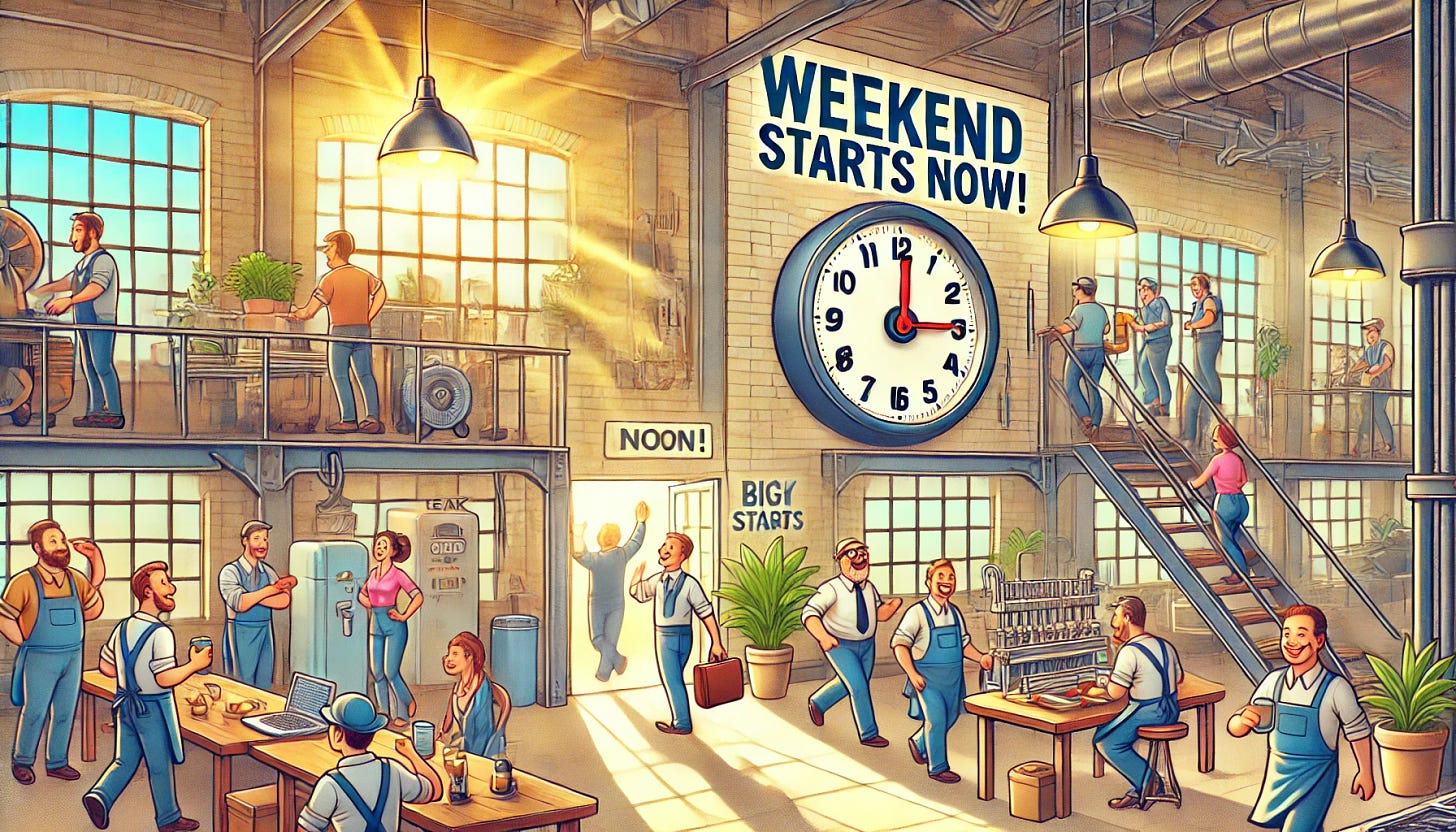Back in 1947, the standard Australian working week was reduced from 44 hours to 40. In 1983, 36 years later, the working week was reduced to 38 hours. That was more than 40 years ago, and there has been a lot of technological progress since then. It makes sense to take some of the benefits of that progress in the form of shorter working hours.
I’ve been an active supporter of the movement for a Four-Day week, but progress has been slow. Some of the moment has been dissipated by the availability, for most office workers, of the option of remote work. This option, backed up by the right to disconnect, has greatly improved work-life balance for many of us.
One notable result of remote work has been that lots of offices are just about empty on Fridays, and particularly on Friday afternoons. Office workers stay home, or go home early, then knock off when they’ve wrapped up their work for the week.
But remote work isn’t feasible for everyone. Around half of all jobs have to be done entirely, or mostly, in person. And, there hasn’t been any real adjustment in relative wages to compensate for this. This is a significant economic injustice.
But the shift away from Friday work at the office provides a way to address this injustice and deliver the long overdue 35 hour week at the same time. The idea would be to begin the weekend at Friday lunchtime, with most workplaces closing, and overtime rates applying for those that remained open.
The costs of this change would be modest in the case of office workers, given the unofficial advent of early weekends and the potential efficiency gains from the arrival of AI. For other workers, it would largely offset the decline in real wages since the arrival of the pandemic.
In political terms [3], advocacy of a 35 hour week{2] could be a winner for Labor. Improvements in working conditions, like the right to disconnect, have been among the few positive achievements of the Albanese government, but they’ve been too modest to overcome the general (and correct) impression of pointless drift.
In this context, it’s worth looking at Queensland Labor and Steven Miles’ introduction of 50 cent fares for public transport. This proposal was originally put up by the Greens and seemed way outside the realms of political possibility. But it proved so popular that it pulled Labor back from what seemed likely to be a wipeout, and forced the LNP into copying it. Labor still lost, but not nearly as badly as they might have.
As things stand, Labor is likely to end up with 30 per cent of the national vote, or even less, at the next federal election. Playing it safe, and talking about the “cost of living” is unlikely to change that. What we need, above all, is hope for a better future and a shorter working week will be a step in that direction
fn1. As I’ve mentioned in various posts, I’m not going to do any day-to-day political commentary for a while. Rather, I plan to focus on longer term issues including the climate transition and the future of work.
fn2. In practical terms, Labor could either seek to legislate a 35-hour week or commit to supporting it on a case-by-case basis at the Fair Work Commission. I’ll leave the details of that to Industrial Relations experts/
fn3. Slightly contradicting fn1 here, but I want to make the case that this is a practical idea in the political scene as we find it.
